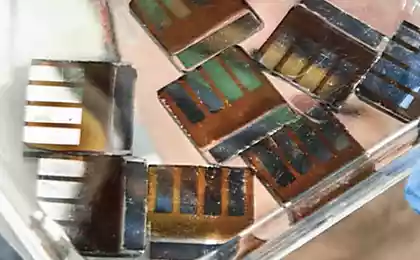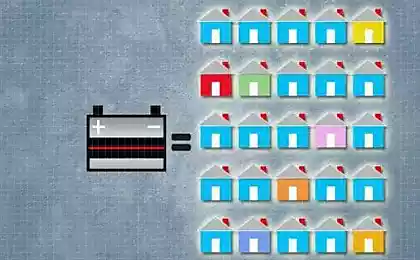227
Perovskite solar panels will be on the market in a year and a half
The World Economic Forum has recognized perovskite solar cells as one of the 10 most significant technologies of 2016. Every year, scientists from around the world publish up to 1,500 scientific papers on this topic, although the first publication appeared only 8 years ago. It is expected that this mineral will be able to make a breakthrough in the solar panel industry, which, according to IHS Markit, is estimated at $ 42 billion.
Perovskites have a crystalline structure that allows them to absorb light efficiently. In addition, they can be mixed with a liquid and applied to various surfaces – from glass to plastic – in the form of a spray.

Initially, the scientific community treated perovskite-based solar panels with distrust. Silicon solar panels have already proved their albeit moderate, but efficiency, and the unique properties of perovskites have not yet been proven. However, in 2012, the efficiency of elements based on perovskites was 10% - at that time, it was a record figure.
To date, perovskite modules achieve an efficiency of 21.7% in the laboratory. And this result was achieved in less than 5 years. According to the WEF, the efficiency of traditional silicon-based solar panels has not changed for 15 years.
Scientists are still experimenting with the technology. In September last year, engineers from the Federal Polytechnic School of Lausanne achieved a figure of 21.6%, adding rubidium to the panels. Scientists from Oxford and Stanford universities have created a panel of two layers of perovskites with an efficiency of 20.3%.

However, Oxford Photovoltaics, which develops thin photovoltaic films based on perovskite, promises to truly change the solar panel market. The modules can be printed on any surface. In December 2016 alone, the company raised additional funding of $10 million. The finished product Oxford Photovoltaics promises to introduce at the end of this year, and on the market it will be by the end of 2018.
But before the solar module can be applied as a spray, scientists will have to solve several problems. Perovskites must function stably in the external environment for a long time - so far, such modules quickly fail. It is necessary to improve the process of applying perovskite composition so that it is distributed evenly. At the same time, developers of silicon solar panels continue to improve technology. Recently, scientist and businessman Zengrong Shih developed a new lightweight, flexible and ultrathin solar panel eArche, which has 80% less mass than its counterparts.
P.S. And remember, just changing our consumption – together we change the world!
Source: hightech.fm/2017/03/24/spray_on_solar_cells
Perovskites have a crystalline structure that allows them to absorb light efficiently. In addition, they can be mixed with a liquid and applied to various surfaces – from glass to plastic – in the form of a spray.

Initially, the scientific community treated perovskite-based solar panels with distrust. Silicon solar panels have already proved their albeit moderate, but efficiency, and the unique properties of perovskites have not yet been proven. However, in 2012, the efficiency of elements based on perovskites was 10% - at that time, it was a record figure.
To date, perovskite modules achieve an efficiency of 21.7% in the laboratory. And this result was achieved in less than 5 years. According to the WEF, the efficiency of traditional silicon-based solar panels has not changed for 15 years.
Scientists are still experimenting with the technology. In September last year, engineers from the Federal Polytechnic School of Lausanne achieved a figure of 21.6%, adding rubidium to the panels. Scientists from Oxford and Stanford universities have created a panel of two layers of perovskites with an efficiency of 20.3%.

However, Oxford Photovoltaics, which develops thin photovoltaic films based on perovskite, promises to truly change the solar panel market. The modules can be printed on any surface. In December 2016 alone, the company raised additional funding of $10 million. The finished product Oxford Photovoltaics promises to introduce at the end of this year, and on the market it will be by the end of 2018.
But before the solar module can be applied as a spray, scientists will have to solve several problems. Perovskites must function stably in the external environment for a long time - so far, such modules quickly fail. It is necessary to improve the process of applying perovskite composition so that it is distributed evenly. At the same time, developers of silicon solar panels continue to improve technology. Recently, scientist and businessman Zengrong Shih developed a new lightweight, flexible and ultrathin solar panel eArche, which has 80% less mass than its counterparts.
P.S. And remember, just changing our consumption – together we change the world!
Source: hightech.fm/2017/03/24/spray_on_solar_cells























